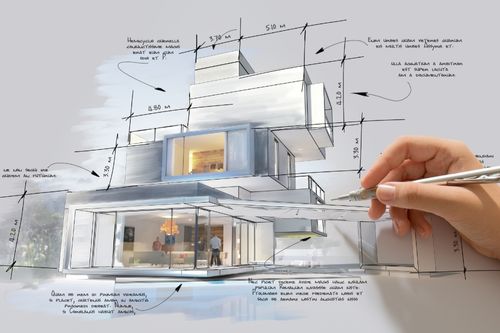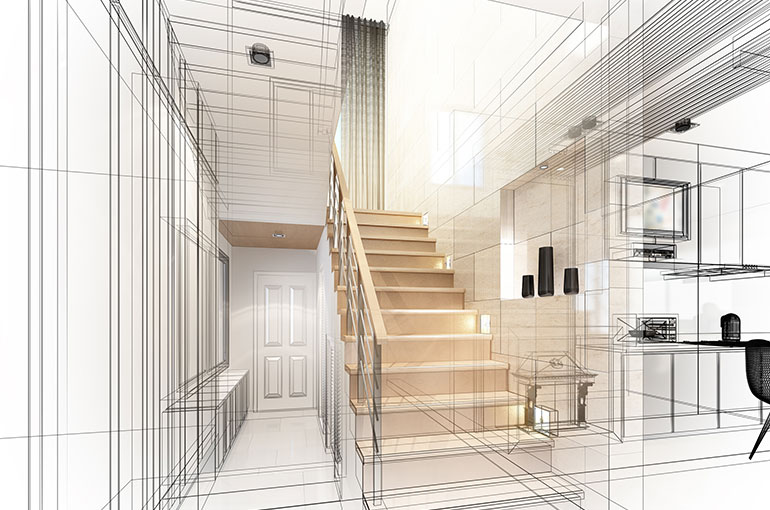The Vital Function of an Architect in Forming Lasting Urban Settings for Future Generations
The function of a designer in crafting lasting city atmospheres is increasingly critical in reacting to the obstacles of environment adjustment and urbanization. By effortlessly incorporating ecological concepts into their styles, engineers not only boost the visual and functional quality of metropolitan spaces yet additionally address pushing problems such as power performance and social equity.
Comprehending Sustainable Urban Design
Lasting metropolitan layout integrates eco-friendly concepts with metropolitan planning to develop environments that are not just habitable however likewise resilient. This approach stresses the relevance of including natural systems into the metropolitan textile, guaranteeing that growth satisfies the requirements of the present without compromising the capability of future generations to satisfy their own demands. Key aspects of lasting metropolitan layout consist of efficient land use, the promotion of biodiversity, and the combination of green spaces, every one of which contribute to boosted lifestyle for citizens.
Furthermore, lasting city style prioritizes the reduction of the metropolitan warmth island effect, enhanced air quality, and efficient stormwater monitoring. It motivates making use of renewable resources and energy-efficient building techniques, which considerably reduced carbon impacts. Lasting city style promotes social equity by creating obtainable public areas and advertising mixed-use developments that provide to varied populations.
Via thoughtful planning and ingenious layout methods, lasting city environments can boost neighborhood durability against environment adjustment while fostering financial development. This holistic method not just addresses immediate city difficulties however additionally lays the groundwork for much healthier, a lot more lasting cities for generations to come.
Key Duties of Designers
Engineers play an essential role fit lasting metropolitan environments by converting style concepts into concrete frameworks and areas. Their responsibilities encompass a broad variety of tasks that add to the overall success of metropolitan design tasks.
Primarily, engineers carry out detailed site evaluations to recognize the ecological, social, and cultural context of their jobs. This fundamental understanding notifies their style choices, ensuring that structures integrate with their surroundings. They likewise take part in collaborative procedures with stakeholders, consisting of city organizers, designers, and the neighborhood, cultivating a comprehensive method to urban growth.
Additionally, architects are tasked with creating designs that maximize energy effectiveness, resource conservation, and functionality. They need to adhere to regional zoning laws, building codes, and sustainability qualifications, ensuring compliance while pushing the boundaries of advancement.
Furthermore, designers are accountable for managing the design procedure, coordinating with various experts throughout the building and construction phase to make sure that the vision is recognized precisely (cda architects). Inevitably, their function is not exclusively about appearances; it is regarding creating resistant, flexible areas that boost the top quality of life for existing and future generations, laying the foundation for sustainable urban living
Cutting-edge Products and Techniques

Additionally, advancements in modern technology have brought about the advancement of high-performance materials, such as protected concrete types (ICFs) and photovoltaic glass, which add to energy preservation and harness renewable power. Strategies such as easy solar layout and eco-friendly roofing systems additionally exemplify how architecture can harmonize with all-natural systems, minimizing reliance on fabricated heating and cooling.
In addition, the assimilation of clever products, which adjust to ecological modifications, supplies promising avenues for improving building efficiency. These materials can react to temperature level variations or dampness levels, optimizing comfort and sustainability.
Eventually, the strategic option and application of cutting-edge products and techniques encourage architects to develop YOURURL.com metropolitan areas that are not only useful and cosmetically pleasing yet also durable and ecologically accountable, ensuring a lasting future for generations look at more info ahead. cda architects.
Area Involvement and Collaboration
The success of cutting-edge materials and methods in sustainable urban design is considerably improved by active community involvement and partnership. Architects have to identify that the constructed atmosphere profoundly impacts the lives of neighborhood homeowners, making it vital to involve them in the layout procedure. Involving the neighborhood cultivates a sense of possession and responsibility, guaranteeing that developments not just satisfy visual and practical requirements however additionally show the values and desires of those who occupy them.

Effective neighborhood involvement additionally assists in prioritizing social equity within city growth. By considering the voices click this link of marginalized populaces, engineers can create rooms that are inclusive and fair. By doing this, area involvement and collaboration become important to attaining absolutely sustainable metropolitan atmospheres that offer the demands of current and future generations.
Future Fads in Sustainable Architecture
An arising emphasis on flexible reuse and circular economy principles is readied to redefine the landscape of lasting design. As cities face enhancing populace thickness and ecological difficulties, architects are significantly turning to approaches that maximize existing structures rather than going after new builds. This method not only protects cultural heritage however likewise dramatically minimizes resource consumption and waste.
Additionally, innovations in modern technology are shaping future trends in lasting design. The integration of wise materials and building systems permits real-time power administration, boosting performance and reducing carbon footprints. Developments such as eco-friendly roof coverings, living wall surfaces, and energy-generating exteriors are becoming conventional practices, additionally advertising ecological balance within urban environments.
Moreover, a shift in the direction of biophilic style is getting traction, emphasizing the link in between nature and human wellness. By incorporating natural environments, architects produce rooms that cultivate psychological wellness while promoting biodiversity.
Conclusion
In final thought, designers are essential beforehand sustainable metropolitan atmospheres with their competence in design, cutting-edge materials, and community interaction. By prioritizing energy performance and source preservation, these professionals add to the production of durable metropolitan rooms that fulfill the needs of existing and future generations. The combination of environmental concepts not only enhances livability yet also promotes social equity, making certain advancements resonate with the values and ambitions of the neighborhoods they offer.